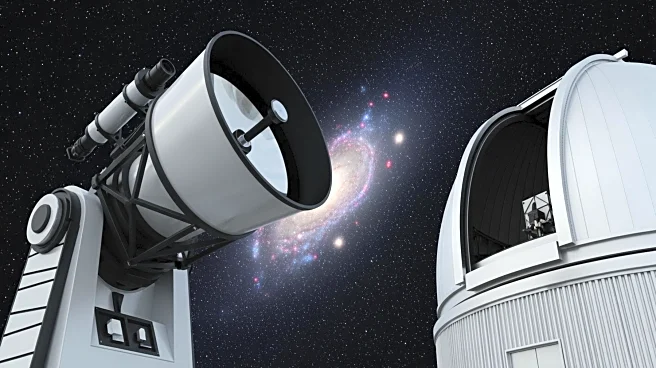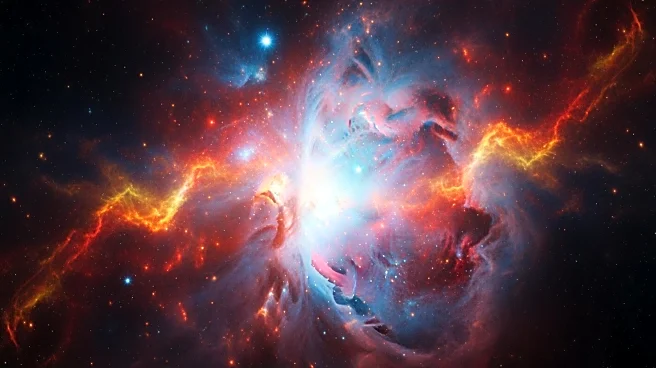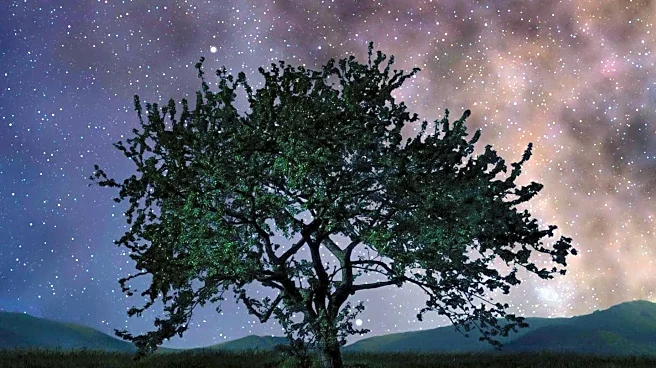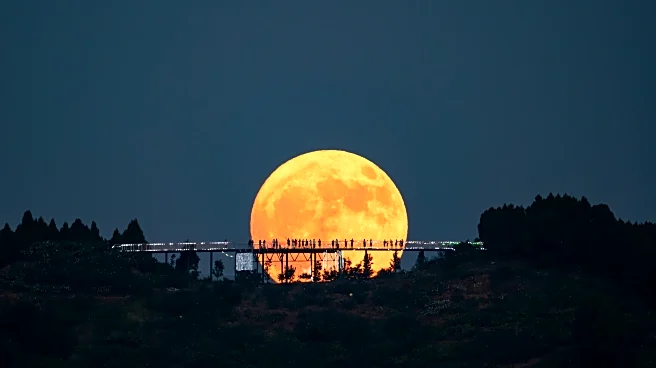What's Happening?
The Rubin Observatory, located in the Andes Mountains in Chile, is utilizing advanced technology to capture real-time images of the night sky. The observatory, named after astronomer Vera Rubin, is equipped
with the LSST camera, the largest digital camera ever built, capable of imaging large areas of the sky. This technology allows the observatory to create a digital movie of the universe by scanning the sky every few nights. The data collected will be used to explore cosmic questions such as dark matter, dark energy, and potentially hazardous asteroids.
Why It's Important?
The Rubin Observatory's capabilities represent a significant advancement in astronomical research. By providing real-time data, the observatory enables scientists to study the universe's structure and evolution in unprecedented detail. The public availability of this data democratizes access to astronomical information, allowing both professional and citizen scientists to contribute to discoveries. This initiative could lead to breakthroughs in understanding fundamental cosmic phenomena and enhance our ability to predict and mitigate potential asteroid threats.
Beyond the Headlines
The Rubin Observatory's approach to data sharing reflects a broader trend in science towards open access and collaboration. By making its findings publicly available, the observatory fosters a global scientific community that can work together to solve complex astronomical puzzles. This model of open science could inspire similar practices in other fields, promoting transparency and innovation.












